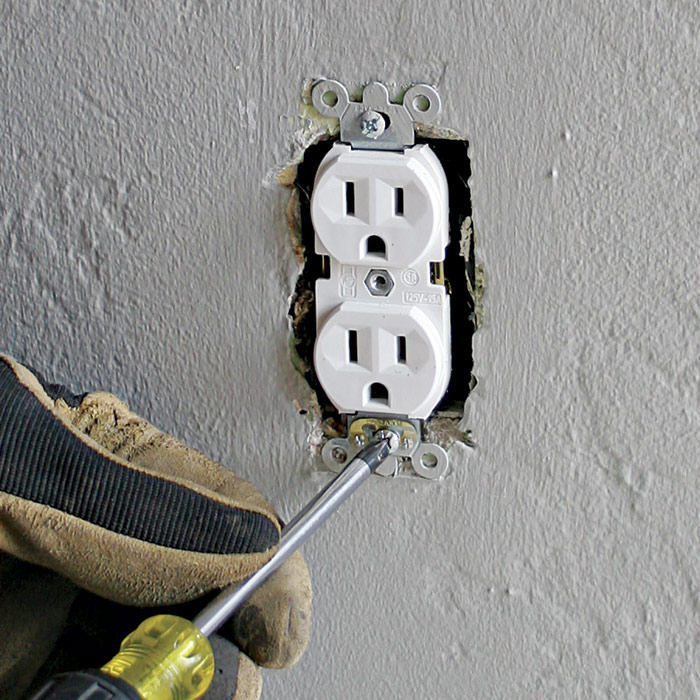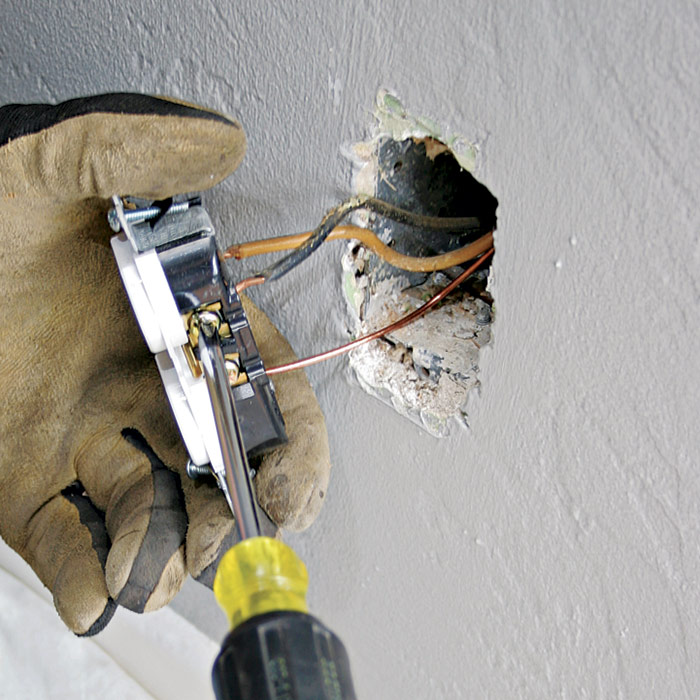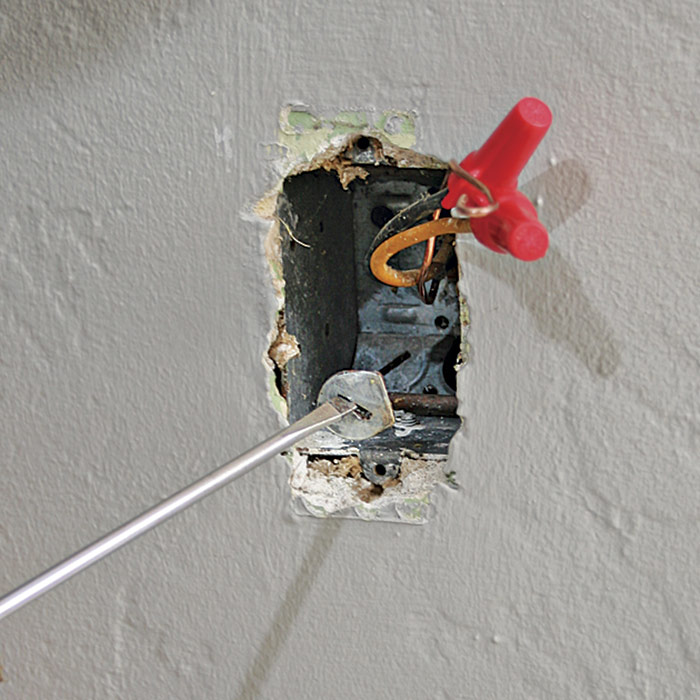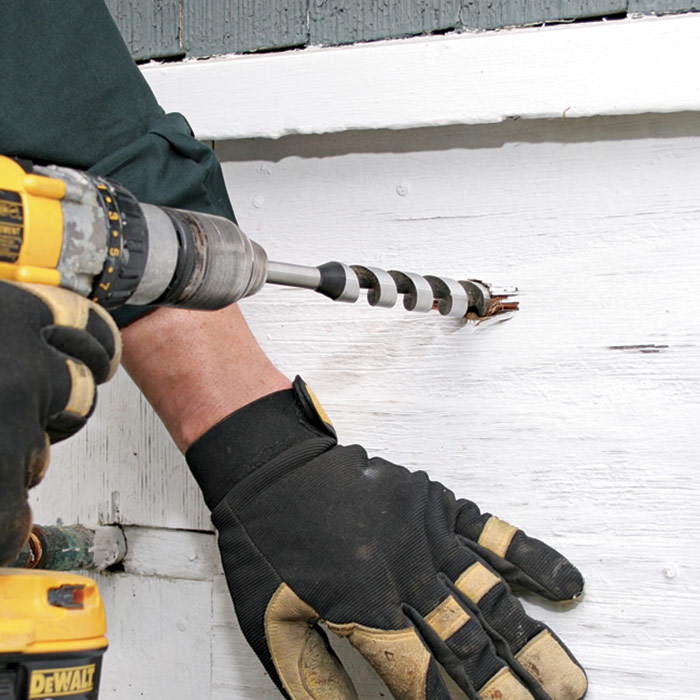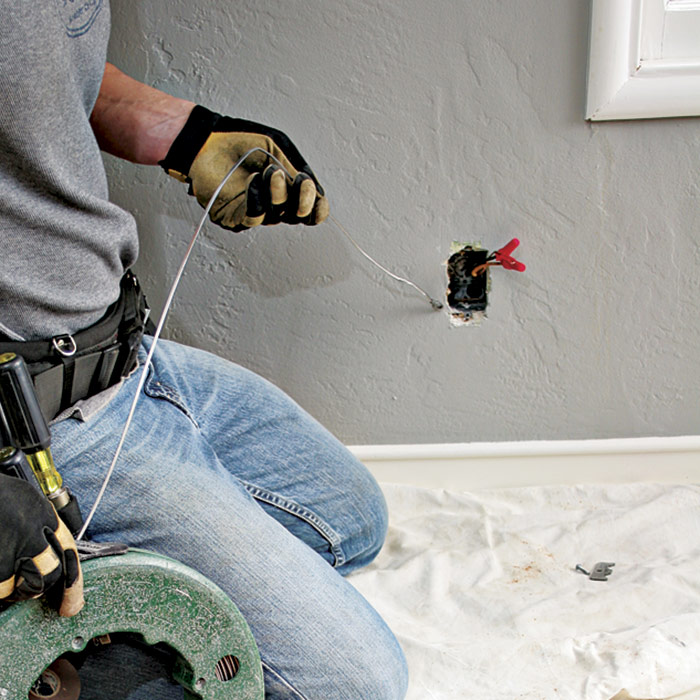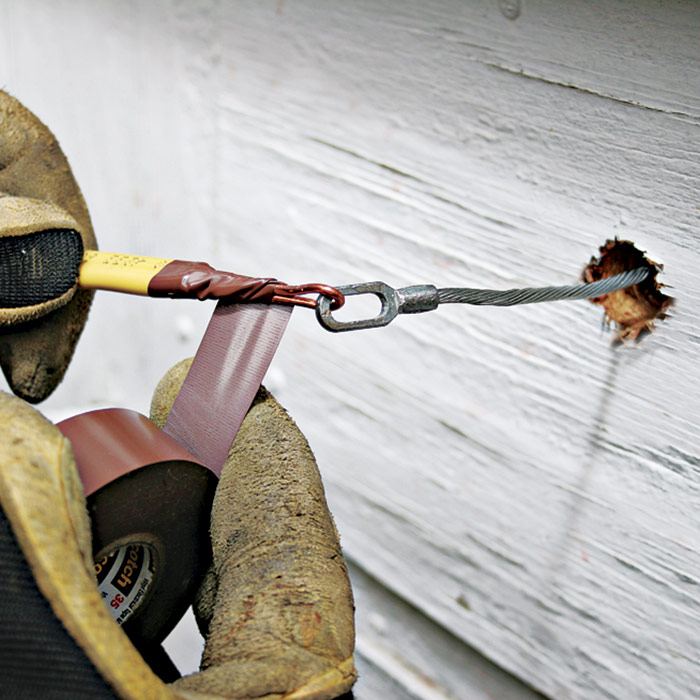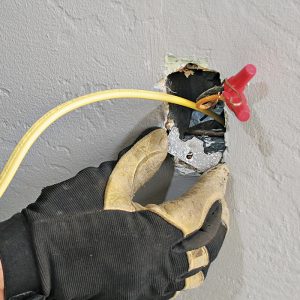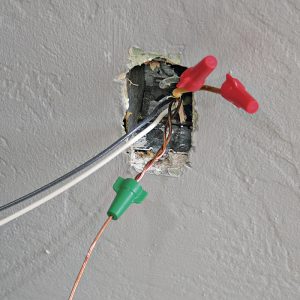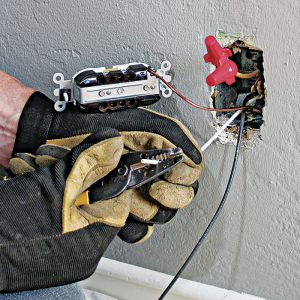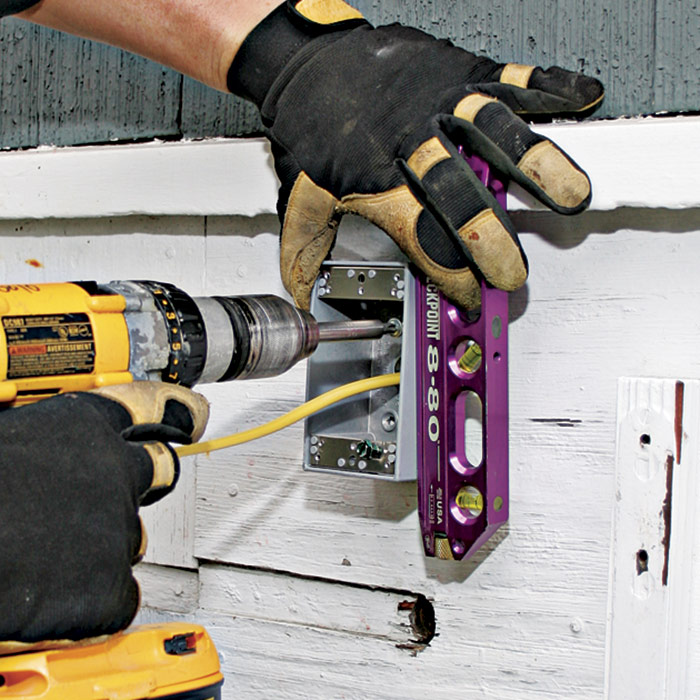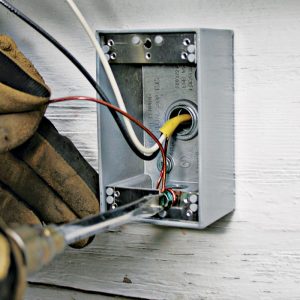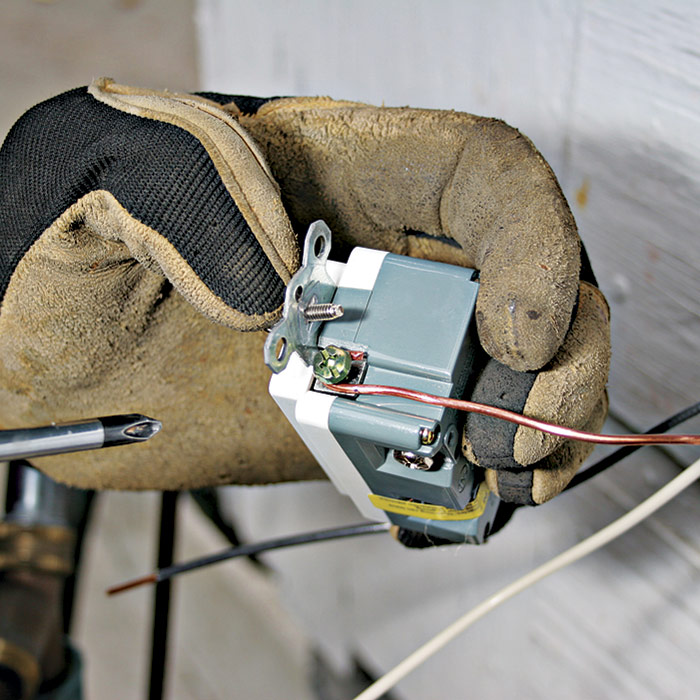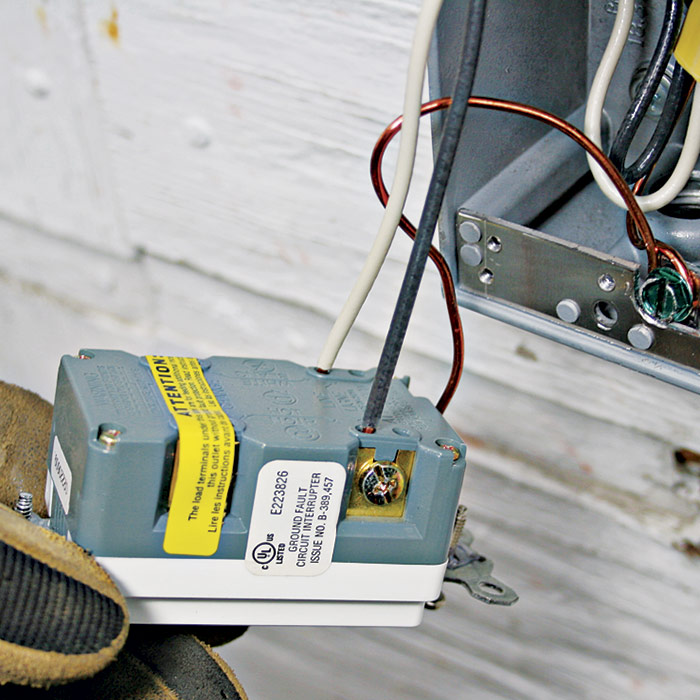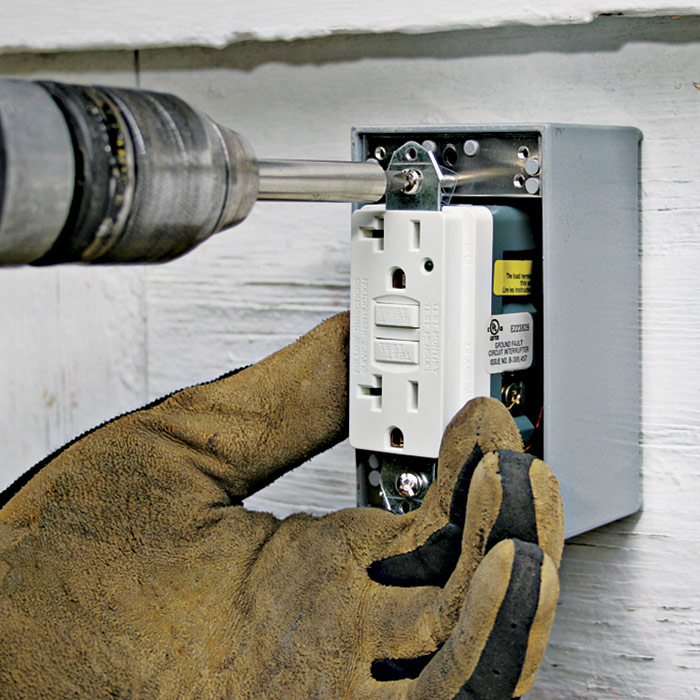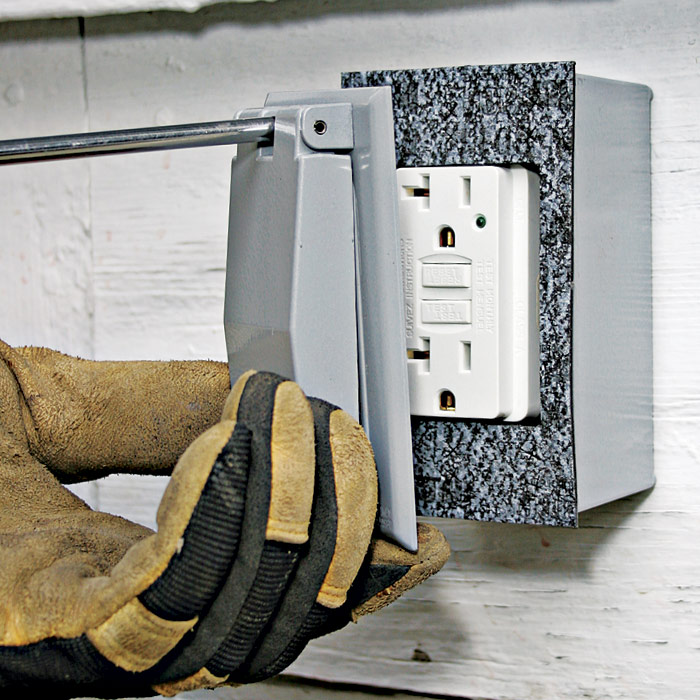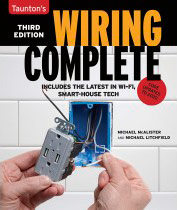Tapping Into an Existing Outlet
Follow these guidelines to tap into an interior outlet when adding an outdoor receptacle.

When adding a single outdoor receptacle, it’s usually easiest to tap into an interior outlet within the same stud bay. In the installation shown here, the electrician solved the box-capacity problem by replacing the old receptacle with a commercial-grade duplex receptacle. Instead of splicing new and old wires and using pigtails—which would have required twist-on wire connectors and thus a larger box—he joined incoming and outgoing wires by inserting them into terminal holes in the back of the receptacle and then tightened down the terminal screws. Note: Wiring a commercial-grade receptacle in this manner is not the same as back-wiring a standard receptacle because standard receptacles have inferior spring clamps that are unreliable.
Adding an Outdoor Receptacle

Start by turning off the power to the receptacle at the panel or fuse box; then use a voltage tester to make sure the power is off. Remove the cover plate and unscrew the mounting screws securing the receptacle to the outlet box 1.
Pull the receptacle out of the box, being careful not to touch the screw terminals; then test them again with a probe tester to make sure they’re not energized 2. Detach the wires from the terminals, fold them out of the way, and look for a knockout in the box to remove. Typically, a pair of knockouts will be hidden beneath an integral cable connector—unscrew it. Then remove a knockout from the outlet box 3. Drill through the exterior wall and into the same stud bay as the interior receptacle 4. Then, inside the house, push fish tape through the knockout hole and into the stud bay 5. Outside, a helper can catch the tape, pull it out of the hole you just drilled, and attach the new cable to it 6.
Inside, pull the fish tape and the attached cable into the box. Pull about 1 ft. of new cable out of the box and then replace the integral cable clamp 7 to secure the cable. Strip the cable sheathing and splice like wires together, starting with the ground wires. Use a special green grounding nut to splice the grounds 8. Use wire strippers to remove 1⁄2 in. of the insulation from the ends of the hot and neutral wires 9.
To save space in the old box, insert the stripped wire ends into terminal holes in the back of the spec-grade (commercial-grade) receptacle 10. Because spec-grade receptacles solidly clamp wire ends, this connection is as solid as any splice. Fold the wires into the box as you push the receptacle into place until it is fully seated in the box—do not use mounting screws to pull the receptacle into the box because this could strip the screw threads. Then replace the cover and screw it into place.
| PRO TIP: To power holiday lights safely, plug them into a GFCI receptacle housed in a waterproof while-in-use box cover. But before installing the lights, calculate the total wattage of all the bulbs so you don’t overload the circuit. |
Mounting & Wiring an Exterior Outlet
Once the new cable is spliced to the cable in an existing receptacle, feed the cable through the cable connector in the back of the exterior box and mount the box. (The hole drilled in the exterior wall must be wide enough for the cable connector or the box won’t sit flat to the wall.) To mount the box, use mounting ears or the small holes in the back. Apply siliconized caulking to the hole before attaching the box. Plumb the box and screw it to the outside of the building 1.
Strip sheathing from the cable and ground the box by looping the bare ground wire around the green grounding screw. Leave this ground wire long 2. Use a wire stripper to remove 1⁄2 in. of the insulation from the ends of the neutral and hot wires. Next, loop and attach the long ground wire to the green ground screw on the GFCI receptacle 3. Then connect the hot and neutral wires in their respective screw-terminal holes 4.
If the GFCI receptacle has plaster ears, use diagonal cutters to remove them;
otherwise, the receptacle may not fit into the box. Fold the wires and push the receptacle into the box; then screw down the mounting screws that secure the receptacle to the box 5. A weatherproof gasket is used to keep water away from the wires—set it in place around the receptacle before you attach the cover 6.
| PRO TIP: GFCI receptacles are larger than standard duplex receptacles, so there will not be enough room in a single-gang box if you also need to splice an outgoing cable to feed another outdoor outlet downstream. In that case, install a deep box or install an extension to the single-gang box. |
Excerpted from Wiring Complete, 3rd Edition (The Taunton Press, 2017) by Michael Litchfield and Michael McAlister
Available in the Taunton Store and at Amazon.com.

